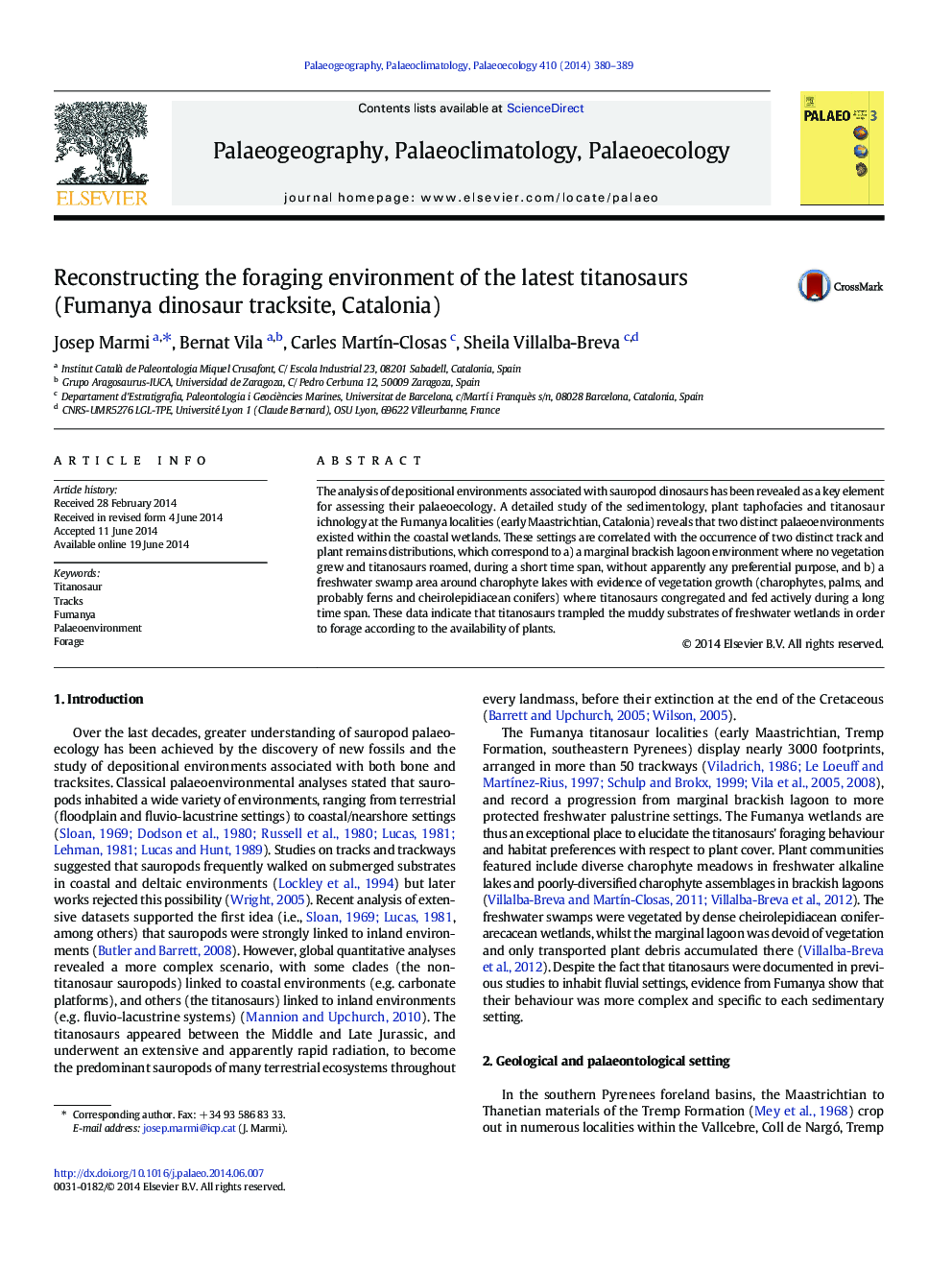| Article ID | Journal | Published Year | Pages | File Type |
|---|---|---|---|---|
| 4466133 | Palaeogeography, Palaeoclimatology, Palaeoecology | 2014 | 10 Pages |
•Maastrichtian Fumanya dinosaur tracksites are among the most important worlwide.•Ichnology and plant taphofacies reveal two environments in a coastal area.•Taphonomical evidence suggests that titanosaurs congregated in coastal areas.•Data supports the hypotheses that titanosaurs also inhabited coastal environments.
The analysis of depositional environments associated with sauropod dinosaurs has been revealed as a key element for assessing their palaeoecology. A detailed study of the sedimentology, plant taphofacies and titanosaur ichnology at the Fumanya localities (early Maastrichtian, Catalonia) reveals that two distinct palaeoenvironments existed within the coastal wetlands. These settings are correlated with the occurrence of two distinct track and plant remains distributions, which correspond to a) a marginal brackish lagoon environment where no vegetation grew and titanosaurs roamed, during a short time span, without apparently any preferential purpose, and b) a freshwater swamp area around charophyte lakes with evidence of vegetation growth (charophytes, palms, and probably ferns and cheirolepidiacean conifers) where titanosaurs congregated and fed actively during a long time span. These data indicate that titanosaurs trampled the muddy substrates of freshwater wetlands in order to forage according to the availability of plants.
